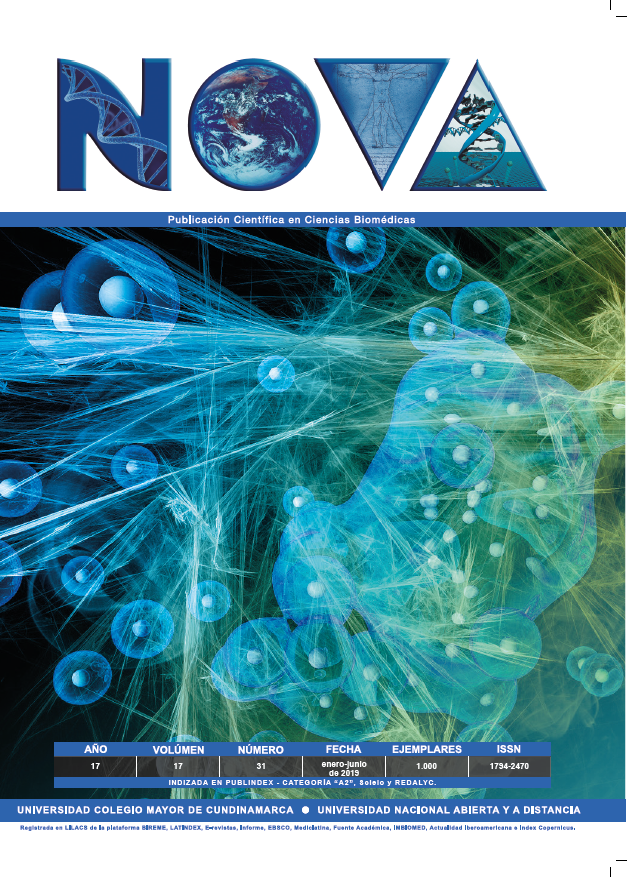NOVA por http://www.unicolmayor.edu.co/publicaciones/index.php/nova se distribuye bajo una licencia Reconocimiento No Comercial- Compartir igual
Así mismo, los autores mantienen sus derechos de propiedad intelectual sobre los artículos,
Declaración de privacidad.
Los nombres y las direcciones de correo electrónico introducidos en esta revista se usarán exclusivamente para los fines establecidos en ella y no se proporcionarán a terceros o para su uso con otros fines.
Método OCRA en diferentes sectores productivos
Musculoskeletal disorders (MSD) are the new epidemic of chronic diseases, are multifactorial and affect to different productive sectors. Although there are multiple tools for the evaluation of static and dynamic load, OCRA (Occupational Repetitive Action) seems to be an attractive option. Objective. To conduct a literature search on the use of the OCRA and DME method in workers of various productive sectors (2007-2018). Materials and methods. A literature review (following the PRISMA statement) of studies assessing the level of biomechanical risk (OCRA) and the prevalence of DME in the Scielo, Science Direct, Scopus, ProQuest, Gale, PubMed, Lilacs and Ebsco databases was performed, 7 studies met the selection criteria; Most are quantitative. Results. 79% of the conditions related to the task require physical demands and involve repetitive movements (gardening and flower growers); the production of DME in upper-lower back, upper and lower extremities, wich are generated by the frequency of the activities in the footwear production; In addition, “very high risks” of developing DME (salmon industry) and a medium index (OCRA) for repetitive movements that require special care (U-Assembly line) were found. Conclusions. The review showed the limited use of the OCRA method for the detection of SMD in workers from different sectors; and this method can be used for the detection of biomechanical risk.









